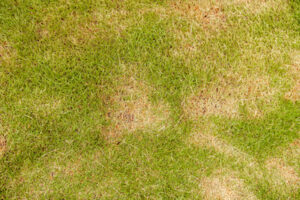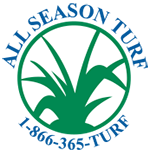 It can be difficult to keep a lawn looking green and beautiful in California. Many homeowners have to choose between grass that looks great and affordable water bills. There is good news though – All Season Turf offers a solution. Keep reading to learn about some of the grass problems we can help you say goodbye to and then contact us at (866) 365-8873 for a free estimate.
It can be difficult to keep a lawn looking green and beautiful in California. Many homeowners have to choose between grass that looks great and affordable water bills. There is good news though – All Season Turf offers a solution. Keep reading to learn about some of the grass problems we can help you say goodbye to and then contact us at (866) 365-8873 for a free estimate.
Buildup of thatch
Some lawns develop a thick layer of thatch, which is made up of dead grass, roots, and other organic matter that becomes matted between the green plant and the roots. By keeping water, air, and nutrients from reaching the soil and roots, this coating can suffocate your lawn. Thatch also serves as a shelter for pests.
There’s no need to be concerned about thatch after installing artificial turf because it doesn’t produce any.
Bald spots
Bare patches in your lawn can emerge for a variety of causes, including excessive foot traffic, disease, bugs, or even burrowing pets. An easy approach is to remove the dead grass and replace it with artificial turf. Even if it’s constructed of different materials than what was originally installed, the new “grass” will blend in with the rest of your yard.
The only disadvantage of this procedure is that it may cause bald spots in the remaining natural grass on your yard. To guarantee continuous grass growth, it is usually best to replace all of your turf with an outdoor artificial grass.
Grass that is brown or dead
One of two things could be causing your lawn to turn brown: either too much or not enough water. If there is a lot of rain for an extended period of time, the soil might get soggy, suffocating the roots and resulting in a lifeless lawn. The soil will dry out and the grass will wither if you have gone on vacation or haven’t watered your lawn in a long time.
Synthetic grass, which keeps lush and green regardless of the weather, is a sure-fire way to create a picture-perfect lawn.
Unhealthy soil
In order to grow lush and vibrantly, grass requires healthy soil. Some soils are too sandy or clay-like to sustain healthy grass growth, while others are too acidic. Fertilizing your lawn is the answer to this problem. Unfortunately, depending on the soil conditions, no amount of fertilizer can always revive a sickly soil. Because outdoor artificial turf does not require soil to grow, it may be installed on any type of terrain.
Fungal infections
Antibiotics and antifungal drugs have little effect on fungus, unlike people and animals. There’s no easy method to get rid of a fungal illness that has taken hold in a natural grass lawn.
Fungicides can be used to kill off existing fungi and prevent them from spreading further, but by the time the fungus is visible to the naked eye, it has usually already done its damage. Dollar spot, brown patch, and blight are examples of common fungal infections.
Fungal diseases have no effect on synthetic turf. Because there are no seeds or organic debris for fungi to feed on, it prevents them from spreading.




 Phone:
Phone: